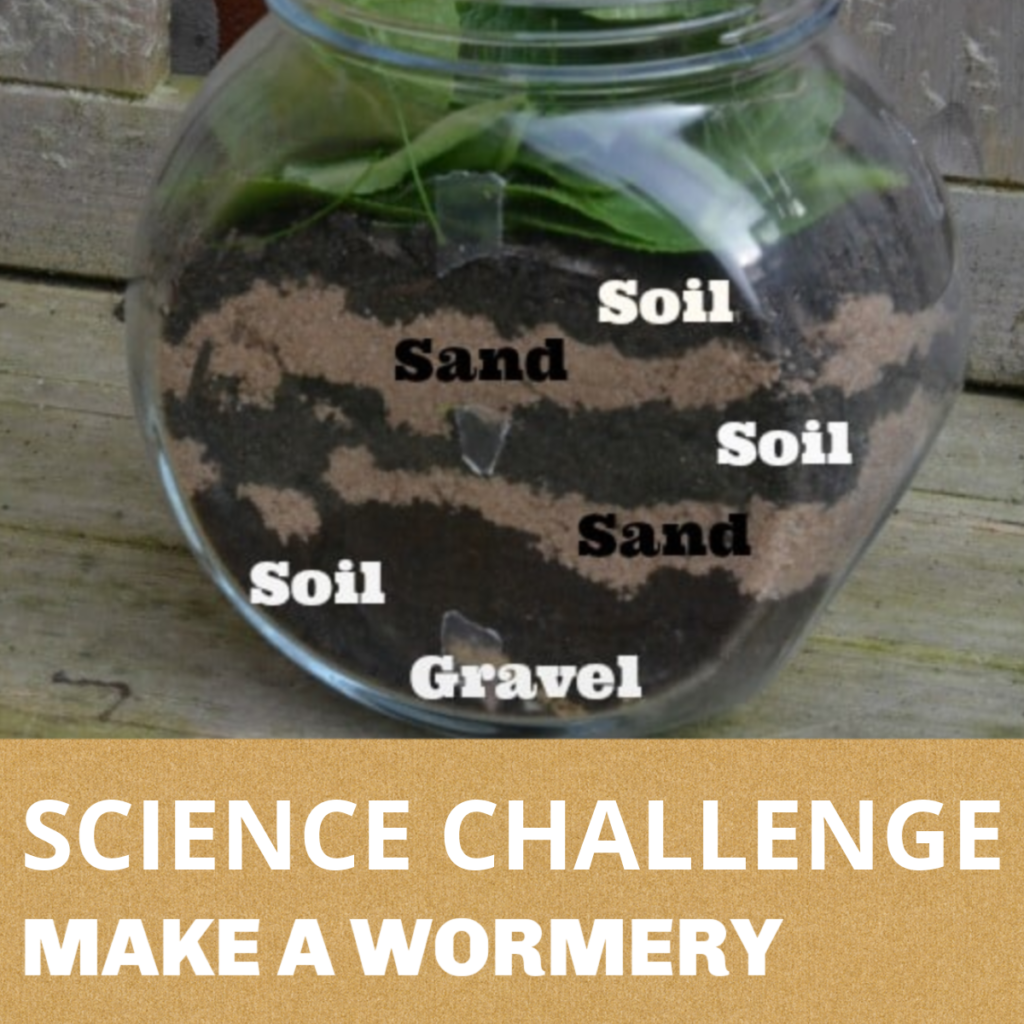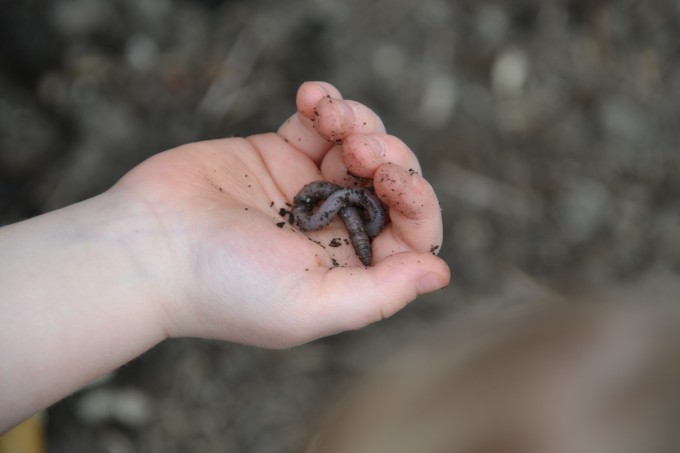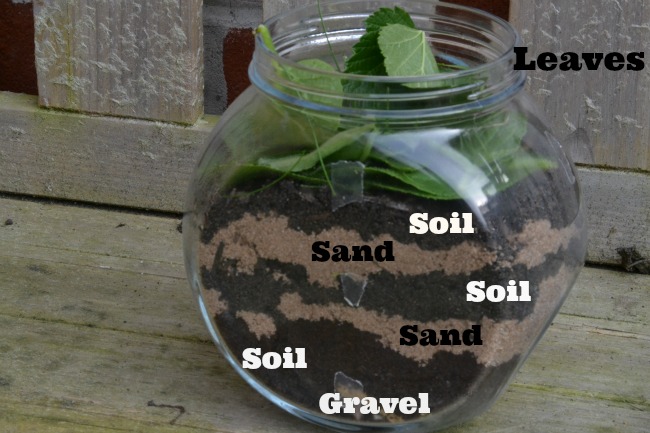Do you know you can easily make a homemade wormery? It’s probably not as tricky as you might think, either!
A wormery is a great way to make observations over time and learn about earthworms, which are actually very useful animals.

What you need to make a wormery
- An old jar, plastic is the best.
- Sand
- Soil
- Gravel
- Old leaves
- Water
- Grass clippings
- Leaves
- Worms
How to make a homemade wormery
- Add a layer of gravel or small stones to the bottom of the jar. This should help with drainage.
- Add the soil and sand in layers
- Drop a small amount of water onto the surface – not too much
- Find some worms and gently put them on top of the soil
- Add the leaves and grass clippings to the top
- Make some holes in the lid ( get an adult to help, and screw it on the jar )
Tops tips for a homemade wormery
Keep the wormery out of direct sunlight. We are keeping ours in a cupboard.
You should see the sand and the soil get mixed up as the worms burrow down. The leaves and grass should be pulled down into the soil so it all gets mixed together.
This is what worms do in the garden. They help carry decaying material into the soil, where it is broken down by microorganisms into nutrients that can be used by plants to grow.
Questions about worms
Why are earthworms segmented?
If you look at an earthworm, you can see the body is made up of lots of segments. Underneath the segments are muscles which contract and relax, allowing the worm to move.
Can earthworms breathe?
Earthworms absorb oxygen through pores in their skin, which is why they come up to the surface when it rains. They can’t breathe in waterlogged soil.
Why are worms so important?
Worm tunnels allow water to reach plant roots, and the process of worms eating soil and expelling it releases nutrients, which plants then take up through their roots and use for growth.
Worms are also a source of food for other animals.
Key stage 2 – Animals and Ecosystems


Last Updated on March 6, 2024 by Emma Vanstone


You are a braver woman than me! However, this would make my son very happy indeed so I will embrace the marigolds and give it a go!
Why is it best not to use glass? I have a 10 gal., aquarium with a wire top that I would like to use.
wondeful, I would like to do this with my students this year. I noticed you recommended plastic. I have a large glass container, would this be an acceptable material for a homemade wormery?
Thank you for sharing this!!
I’m curious how long you can keep the ecosystem? How often do you need to add ‘food’ and water?